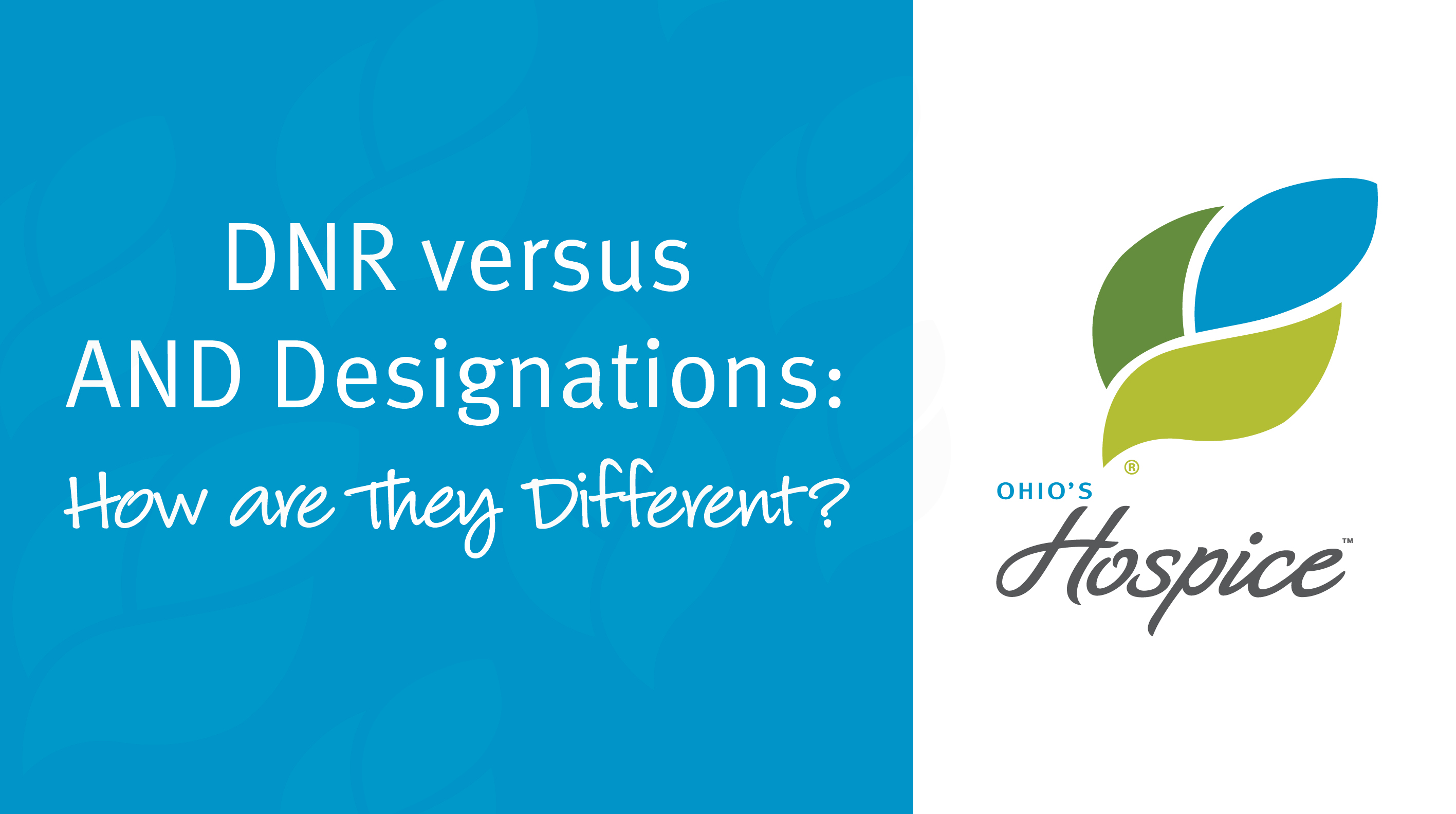
DNR versus AND Designations: How are They Different?
In the late 1990s, the late Reverend Chuck Meyer offered the idea of the Allow Natural Death (AND) designation as an alternative to Do Not Resuscitate (DNR) orders. Both terms have similar clinical implications: they refer to care that manages pain and symptoms to maintain and provide comfort.
However, the terms convey very different images. For some, the discussion may be semantic, but for others, it’s philosophical, guiding the parameters of treatment focused on comfort and not curative interventions for those with a terminal illness.
What is a DNR?
The definitions of each of these designations paint different pictures for most people. A DNR is medical order written by a doctor, instructing healthcare providers to not perform cardiopulmonary resuscitation (CPR) if a patient stops breathing, or if his or her heart stops beating. This lack of action—the withholding of care—is often framed around crisis and generates a harsher perspective with a more negative tone. This negative tone may confuse people and create an environment where the patient or family feel guilt or reluctance about signing a DNR.
What is an AND?
An AND, on the other hand, focuses on care and actions healthcare providers should take to support individuals as they move toward death. The structure of the conversation between the patient, family, and the healthcare provider is patient-centered and explores goals and values as issues related to treatment benefit, burden, and expected outcomes. The AND conversation approaches the same situation as a DNR conversation, but offers much more opportunity to individualize care and to help families feel good about the steps taken to minimize suffering.
The AND in Ohio
Ohio uses a statewide DNR order that individuals can carry with them from one care setting to another. Unfortunately, the state has not moved forward with the type of tools or language to support the AND. Individual health settings may use the AND instead of the DNR, but statewide, there is no consistency around this term.
While not specifically using the term AND, half of the states in the U.S. have moved toward using the Physicians Orders for Life-Sustaining Treatment (POLST) Paradigm (www.polst.org). The Institute of Medicine (IOM) identified the POLST and its related strategies as a practical approach to addressing concerns regarding poor communications, a lack of informed decision making, and overuse of resources in the last year of an individual’s life. The POLST has the same philosophical goals of AND and is based on communications, informed consent, a patient’s goals and values, and with the ability to individualize care.
Unfortunately for Ohioans, even though the Senate passed an Ohio version of the POLST last year, the House was persuaded by extreme right-to-life groups that allowing “too much autonomy” for individuals in making their healthcare decisions lays the path toward patient-assisted suicide. Of course, these are many of the same groups and several of the same people that expressed similar concerns when Ohio’s Living Will was passed over two decades ago.
As I watch different communities take on advance care planning initiatives, I hope we see more uptake in the use of the AND as elements of comprehensive advance care planning expand.


